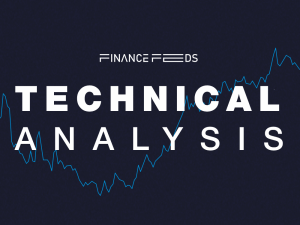Top banks demand too much information in FX benchmark fixing case, plaintiffs argue
Plaintiffs say that the defendants, including JPMorgan, Citi, HSBC and Barclays, request information that goes well beyond “named plaintiffs’ transactions involving foreign currency exchange”.

A lawsuit that accuses a number of major banks of conspiracy to fix foreign currency benchmark exchange rates has led to a dispute over the data to be produced.
The plaintiffs in the case, captioned Nypl v. JP Morgan Chase & Co. et al (1:15-cv-09300), on Friday sent a Letter to the New York Southern District Court asking for clarification of the scope of the discovery in the case and opposing the requests of the defendants regarding the evidence the plaintiffs should produce.
The argument stems from a request by the defendants, including (list is not exhaustive) JPMorgan Chase & Co (NYSE:JPM), Bank of America Corp (NYSE:BAC), Citigroup Inc (NYSE:C), Barclays Capital Inc, HSBC Bank USA et al, for the plaintiffs to produce certain evidence. The request dated October 27, 2017, demands that the plaintiffs provide the defendants with all documents relating to plaintiff’s Forex transactions, including, but not limited to, documents identifying for each such transaction: transaction time and date; transaction location; counterparty information; exchange rate; amount and type of currency exchanged; the purpose of the transaction, etc.
There are other requests for production, including (inter alia):
- All communications between any plaintiff and any defendant relating to a plaintiff’s foreign currency exchange transaction.
- Documents sufficient to show all financial institutions and retail branches at which each plaintiff has engaged in Forex transactions.
- All documents relating to any advice, information, guidance, instructions or recommendations Plaintiffs sought or received concerning Forex rates, from Defendants or otherwise.
- All documents and communications upon which Plaintiffs rely for the contention that “the foreign exchange rates paid by Plaintiffs and the putative class of consumers and business end-users are the FX Benchmark exchange rates or “Fix rates” that are derived daily from FX spot trading, plus a small handling fee”, as well as all documents and communications concerning this contention.
- All documents and communications upon which Plaintiffs rely for the contention that “Defendants each utilize computer programs that regularly, at least daily, transmit updated Benchmark exchange rates derived from FX spot trading plus a small fee for handling to each of their bank branches for retail sales of foreign currency to Plaintiffs and consumers and business end-users”, as well as documents and communications concerning that contention.
- All non-privileged documents reflecting or referring to communications between Plaintiffs and any other person or entity concerning Plaintiffs’ Foreign Exchange Currency transactions.
Overall, the plaintiffs object on the ground that the total of 12 items requested far exceed the Court’s limitation per the Civil Case Management Plan and Scheduling Order and are far beyond the scope of the request Defendants’ set forth in the parties’ Joint Letter of September 15, 2017; namely, “named plaintiffs’ transactions involving foreign currency exchange.”
Plaintiffs now request that the Court order that the time for Plaintiffs production of documents is 3 months from the Court’s September 21, 2017 Order and that the scope of Plaintiffs’ production is limited to “named plaintiffs’ transactions involving foreign currency exchange.”
This is not the end of it, as the banks are not keen to produce all the data requested either. Thus, the defendants agree to produce to plaintiffs documents available in In re Foreign Exchange Benchmark Rates Antitrust Litigation, No. 13 Civ. 7789 (S.D.N.Y.) However, the Foreign Defendants object to plaintiffs’ document requests as addressed to the Foreign Defendants, as the Court’s September 7, 2017 Order expressly permitted document discovery to proceed only against the Non-Foreign Defendants (except with respect to the production of the FOREX documents).
The foreign/non-foreign distinction is important for the defendants, as they seek to prove that there is a lack of personal jurisdiction over the foreign defendants – Barclays PLC (LON:BARC), HSBC Holdings plc (LON:HSBA), Royal Bank of Scotland Group plc (LON:RBS), The Royal Bank of Scotland PLC and UBS AG. The plaintiffs, representing a putative class of consumers and business end-users, try to prove that all of the banks, be them foreign or non-foreign, have to be sued in the United States.
One of the main arguments of the Plaintiffs use is that on May 20, 2015 and December 11, 2012, the banks in question entered into Plea Agreements and Deferred Prosecution Agreements with the United States Department of Justice and had Orders imposing civil penalties entered against them by the Federal Reserve Board (FRB) and the Commodity Trading Futures Commission (CFTC) for engaging in a conspiracy to manipulate and price-fix FX benchmark exchange rates “in the United States and elsewhere” and “within the flow of, and substantially affected, interstate and U.S. import trade and commerce.”
By imposing fines directly on the parent-level corporations, Barclays PLC, Royal Bank of Scotland plc, and UBS AG and HSBC Holdings PLC in the Plea Agreements and FRB and CFTC Orders, the DOJ, FRB and CFTC held the parent corporations responsible for engaging in a conspiracy to manipulate and price-fix FX benchmark exchange rates “in the United States and elsewhere”. This is seen to establish a prima facie showing of personal jurisdiction over the moving Defendants, including wrongful conduct in offices in the United States in Stamford, Connecticut and New York, New York.









